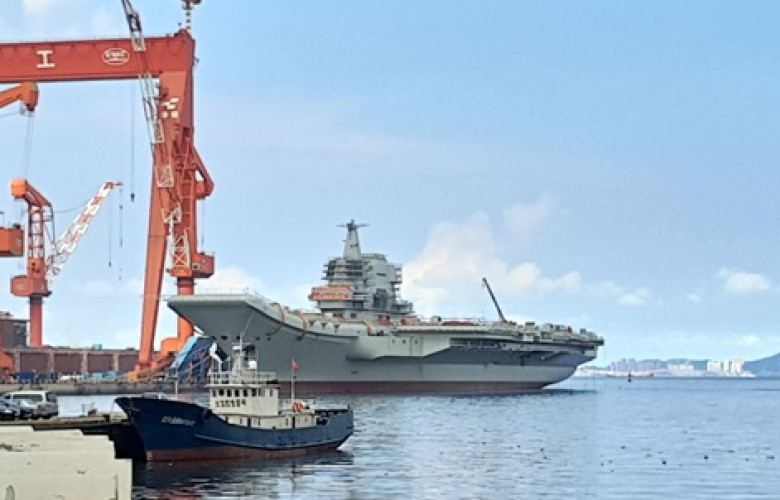Awful but lawful: China’s Australia flotilla
Thomas Shugart
2025-03-25
AUSTRALIA
DEFENCE AND SECURITY
This article first appeared on The Interpreter, published by the Lowy Institute

Australians were recently given a wake-up call to China’s burgeoning blue-water naval capabilities, as a Chinese naval task force conducted multiple unannounced live-fire exercises in the seas between Australia and New Zealand, and then essentially circumnavigated the continent on their way home.
While defence analysts have warned for some time about the growing reach of the Chinese military and its potential threat to Australia’s security interests, this experience nevertheless seems to have caused a fair bit of surprise and consternation. And it raises key questions: was this deployment and its exercises a real advance for the Chinese navy? What kind of challenge was it to Australia’s national security? And what should be done about it?
On the first question, the clear answer for those who have been watching the development of Chinese naval power is a firm “no”. The PLA Navy is now the largest in the world by ship count and is well-equipped with advanced blue-water warships, plus the auxiliary ships needed to keep them at sea far from home. It has maintained naval task forces on a continuous basis outside the Pacific for fifteen years, and has sporadically deployed task forces far from home to places like the Baltic Sea and Alaskan waters. China is now, by far, the world’s dominant maritime power by every measure other than sheer naval tonnage (US Navy ships are, on average, still larger), and its maritime interests are global in nature. That we also see global Chinese naval power should come as no surprise.
Next, what was the nature of the challenge that China posed with its operations in the Tasman Sea? What it was not was a legal challenge. Under international law, the Chinese naval task force was fully entitled to conduct military operations — including live-fire exercises — on the high seas between Australia and New Zealand, no matter how uncomfortable it might make both countries feel. Such a right for state vessels to operate freely also exists within nations’ exclusive economic zones (EEZs), though some seem confused on this point — including China, which regularly interferes with foreign air and naval operations within its EEZ.
To be clear, though, what China conducted was not a freedom of navigation operation (FONOP). When the US Navy conducts a FONOP, it does so for a specific reason: to challenge excessive maritime claims made by other nations that are inconsistent with the international law of the sea. And it does so not just with respect to its adversaries, but sometimes even to its allies and partners, such as FONOPS conducted in recent years challenging claims made by Taiwan and Japan. In China’s case, there was no such maritime claim to challenge, as neither Australia nor New Zealand make improper claims to the Tasman Sea. As such, this was not a demonstration of Chinese freedom of navigation. It was a show of force.
Regardless of the legality of China’s naval operations, however, they were conducted in poor form for a nation that claims to be a responsible stakeholder (though it can be somewhat choosy in deciding when to act as one). To avoid risks to civilian air and maritime traffic, the norm is for such exercises to be announced well ahead of time, not over the radio to passing aircraft that may or may not happen to hear warnings in situ.
In any case, the greater challenge that China’s naval power poses to Australia’s security is over the longer term, in its potential to someday (though not yet) threaten Australia’s maritime access to markets and resources, and thus gain direct coercive power over Australia’s economic well-being. As an example, the growing cosiness between China and the Cook Islands, which sit along crucial sea lines of communication between the United States and Australia, is just the sort of thing that should raise concern in this regard.
So, what is to be done? For a start, Australians should expect more of the same. China’s naval power and reach will continue to rise for the foreseeable future, and so will the scale of its worldwide naval operations. Another thing Australia should do is to continue to invest in maritime capabilities that could counter Chinese naval forces operating abroad — and there is no better example of such a capability than the nuclear-powered fast attack submarines (SSNs) that will be provided under the AUKUS agreement.
While dealing with a three-ship task force should be well within Australia’s current naval capabilities, SSNs are the “apex predators” of the sea, and this task force — not to mention the larger, possibly aircraft carrier-centred ones that may follow it — is an example of why they are needed. In peacetime, an SSN is the perfect tool to keep an eye on the operations of such a task force, while remaining unseen. In wartime, the SSN is the perfect tool to send it to the bottom.
Membership
NZIIA membership is open to anyone interested in understanding the importance of global affairs to the political and economic well-being of New Zealand.